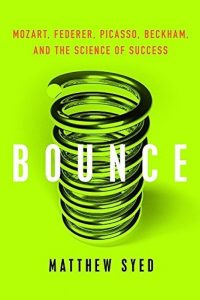 In “Bounce,” Matthew Syed, a three-time Commonwealth table tennis champion and two-time Olympian, delves into the rules of success and challenges the notion of talent. Drawing inspiration from Malcolm Gladwell’s concept of the “10,000 hours rule” in his book “Outliers,” Syed explores the power of practice and the role it plays in achieving excellence.
In “Bounce,” Matthew Syed, a three-time Commonwealth table tennis champion and two-time Olympian, delves into the rules of success and challenges the notion of talent. Drawing inspiration from Malcolm Gladwell’s concept of the “10,000 hours rule” in his book “Outliers,” Syed explores the power of practice and the role it plays in achieving excellence.
Syed begins by sharing his own autobiographical story, taking us back to 1978 when his parents bought a table tennis table for their ordinary suburban home in Southeast England. Little did he know that this simple purchase would open doors to endless hours of table tennis practice and lay the foundation for his success.
Together with his older brother Andrew, Syed spent countless hours playing table tennis, honing their skills, and experimenting with different techniques. Unbeknownst to them, they were accumulating the crucial practice hours that would later propel them towards mastery.
Enter Peter Charters, a teacher at the local primary school and a passionate table tennis enthusiast. Charters’ unwavering dedication to the sport led him to establish Club Omega, an opportunity for children interested in table tennis to train and compete. Through Charters’ guidance and the brothers’ membership at Club Omega, they had access to consistent practice sessions and matches, further cementing their progress.
Syed’s personal story exemplifies the importance of dedicating time to a specific subject to achieve success. He goes beyond this to argue that talent itself is a myth. According to his research, anyone who invests significant time and effort in a particular field can excel. To support this claim, Syed refers to the work of Anders Ericsson, who conducted a study at the renowned Music Academy of West Berlin.
Ericsson divided the students into three groups based on their expected level of achievement. Surprisingly, their biographical histories were remarkably similar, with the only notable difference being the number of hours devoted to serious practice. The highest-achieving violinists had practiced an average of 10,000 hours, followed by the second group with 8,000 hours, and the third group with 6,000 hours. The distinction in skill was not determined by inherent talent but rather by the time dedicated to deliberate practice.




